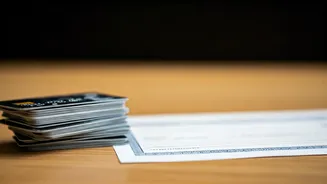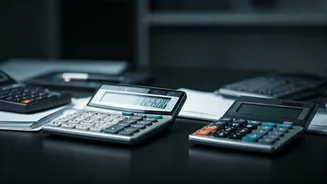Understanding FD Loans
Fixed Deposits (FDs) are a common way for individuals to save money, offering a guaranteed return over a set period. However, these savings can also serve
as a financial tool beyond mere accumulation. Banks often provide loans against these FDs, meaning you can borrow money using your deposit as collateral. This can be a practical option when you need funds without breaking your savings. The interest rates on such loans are typically lower than those on personal loans or credit cards. Using an FD for a loan may be a wise choice if you have a substantial amount in a fixed deposit and need to access funds without losing your savings or paying high interest rates. It is important to know the terms and conditions and calculate the interest to see if it is the right option.
Credit Card Debt Dilemma
Credit cards, while convenient, can lead to substantial debt if not managed carefully. The interest rates on credit cards are generally high, often ranging from 20% to 40% annually. This high interest can quickly snowball the debt, making it difficult to pay off. When facing mounting credit card debt, individuals often seek ways to consolidate or manage their repayments more efficiently. High interest rates can make debt repayment very difficult. In such situations, it becomes important to find cost-effective ways to manage existing debt. This is where options like taking a loan against an FD become valuable. The idea is to move from higher-cost debt to lower-cost debt.
FD Loan as Solution
One strategy is to use the existing Fixed Deposit to secure a loan. Banks usually offer lower interest rates on loans backed by FDs compared to credit cards. This can be a significant advantage, as it enables the debtor to replace high-interest credit card debt with a loan that has a lower interest rate. With this strategy, the borrower can potentially save money on interest payments, and the debt becomes more manageable. In addition, the repayment terms of FD loans are usually more flexible compared to credit cards. It is important to note that you will continue to earn interest on your fixed deposit, albeit at a reduced rate since you've taken a loan against it. The difference in interest rates makes this strategy beneficial for managing and potentially reducing overall debt.
Comparing the Options
Before choosing an FD loan, it is necessary to compare it with other options such as a personal loan. Personal loans, although offering more money, typically have higher interest rates than FD loans. Another option may be debt consolidation loans, which combine multiple debts into a single loan. These loans can simplify repayments but often come with interest rates higher than FD-backed loans. Consider your financial situation and the specific terms offered by different financial institutions. Factors like interest rates, repayment tenure, and any associated fees should be carefully assessed. By comparing these factors, you can make an informed decision on whether an FD loan suits your needs.
Steps to Implementation
To use an FD to clear credit card debt, start by checking the terms and conditions of your FD. Most banks allow loans against FDs. Contact your bank or financial institution to learn about the process. Usually, the bank will assess your FD's value and offer a loan up to a certain percentage of the FD amount. Once the loan is approved, the funds can be used to pay off the credit card debt. Be sure to check the loan's interest rate and repayment terms. It is essential to ensure that the repayment schedule matches your financial capacity. Making timely repayments is very important because it protects your credit score and helps avoid further financial problems.
Important Considerations
While an FD loan can be helpful, certain considerations are essential. First, understand the loan's terms, including interest rates, fees, and the repayment schedule. Ensure that you can comfortably manage the repayments without straining your finances. Consider the impact on your FD; as the loan is repaid, the interest earned on your FD is reduced. Another thing to consider is the tax implications of the loan and interest payments. Consult a financial advisor to understand all financial implications and to make informed decisions. Consider all these factors before deciding to take a loan.
Pros and Cons
The advantages of using an FD loan for credit card debt are significant. The main benefit is the typically lower interest rates compared to credit cards, which can save money on interest payments. Moreover, maintaining your FD as collateral gives you more financial security. However, there are potential drawbacks. You'll continue to earn interest on your FD, but at a possibly reduced rate, due to the loan. There may be loan processing fees, which should be considered when assessing the overall cost. Understand both the positive and negative aspects to make an informed choice that aligns with your financial goals and circumstances. Weigh the benefits against the drawbacks to make the most advantageous decision for your situation.











